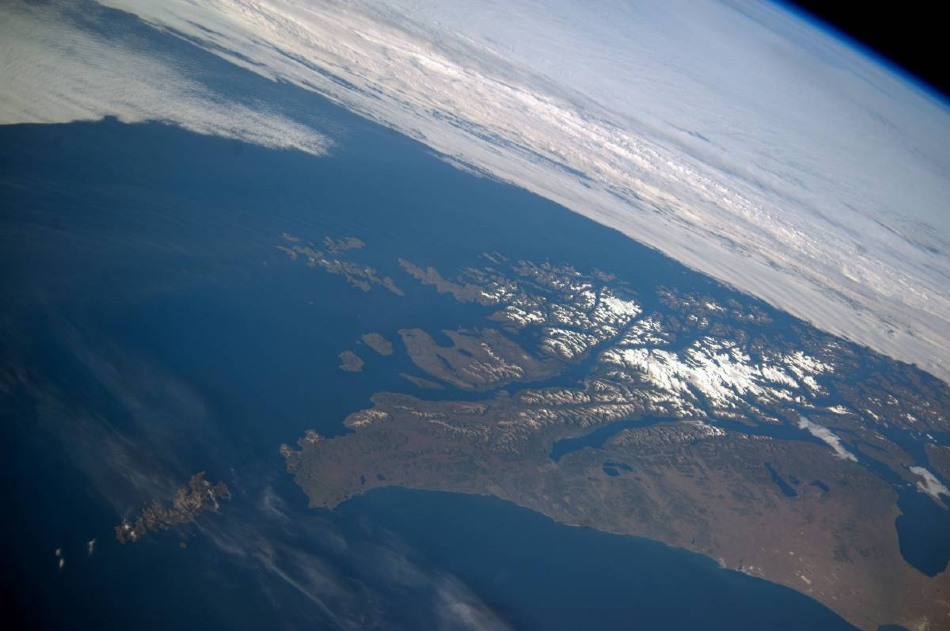Mar 26 2020
There have been changes in the atmospheric circulation in the Southern Hemisphere caused by the same chemicals that destroy the ozone layer that protects the Earth.
 This panoramic image from February 14th, 2014, shows parts of Chile and Argentina from the International Space Station. Image Credit: NASA.
This panoramic image from February 14th, 2014, shows parts of Chile and Argentina from the International Space Station. Image Credit: NASA.
A new study recently published in the Nature journal reports that there has been a break in such changes, which could even reverse, thanks to the Montreal Protocol, an international treaty that successfully eradicated the use of ozone-depleting chemicals.
This study adds to growing evidence showing the profound effectiveness of the Montreal Protocol. Not only has the treaty spurred healing of the ozone layer, it’s also driving recent changes in Southern Hemisphere air circulation patterns.
Antara Banerjee, Study Lead Author and Visiting Fellow, CIRES, University of Colorado Boulder
Banerjee also works in NOAA’s Chemical Sciences Division. This study was started while she was a Postdoctoral Fellow at Columbia University.
The ozone hole was first discovered in 1985 and has been forming in the atmosphere high over Antarctica every spring. Due to ozone depletion, the air cools down, which strengthens the winds of the polar vortex and has an impact on the winds all the way down to the lowest layer of Earth’s atmosphere. Eventually, as a result of ozone depletion, the dry regions at the edge of the tropics and the midlatitude jet stream have been shifted toward the South Pole.
As per earlier studies, these circulation trends are associated with changes in the weather in the Southern Hemisphere, specifically rainfall over East Africa, South America, and Australia, as well as with variations in ocean currents and salinity.
As part of the Montreal Protocol of 1987, the manufacture of ozone-depleting substances like chlorofluorocarbons (CFCs) was phased out. Starting around 2000, the concentrations of such chemicals in the stratosphere began declining, resulting in the recovery of the ozone hole.
As part of the new study, Banerjee and her colleagues have demonstrated that around the year 2000, the circulation in the Southern Hemisphere also ceased to extend toward the pole—a break or slight reversal of the earlier trends.
The challenge in this study was proving our hypothesis that ozone recovery is in fact driving these atmospheric circulation changes and it isn’t just a coincidence.
Antara Banerjee, Study Lead Author and Visiting Fellow, CIRES, University of Colorado Boulder
The researchers achieved this by employing a two-step statistical method known as detection and attribution: detecting whether specific patterns of wind changes noticed are unlikely to be caused by natural variability alone and, if so, whether the variations could be due to human-induced factors, like emissions of ozone-depleting chemicals and CO2.
With the help of computer simulations, they first concluded that the noticed break in circulation trends could not just be attributed to natural shifts in winds. Then, they isolated the effects of greenhouse gases and ozone separately, demonstrating that while an increase in CO2 emissions has continuously expanded the near-surface circulation (including the jet stream) polewards, only the ozone changes could be attributed to a break in circulation trends.
Before the year 2000, due to both increasing CO2 levels and ozone depletion, the near-surface circulation was expanded poleward. Since 2000, CO2 has constantly pushed this circulation poleward, thus balancing the opposing effect of the ozone recovery.
Identifying the ozone-driven pause in circulation trends in real-world observations confirms, for the first time, what the scientific ozone community has long predicted from theory.
John Fyfe, Study Co-Author and Scientist, Environment and Climate Change Canada
With the continuous increase in CO2 levels and the beginning of ozone recovery, the future is less certain, even for those Southern Hemisphere regions where the weather is influenced by the jet stream, as well as those at the edge of the dry regions.
“We term this a ‘pause’ because the poleward circulation trends might resume, stay flat, or reverse,” added Banerjee. “It’s the tug of war between the opposing effects of ozone recovery and rising greenhouse gases that will determine future trends.”